Head of Lighting, GDM Consultants.


Have you ever wondered how the lighting in a space can completely change the way you feel in it? Lighting design is more than just placing lamps around a room – it’s a thoughtful blend of art and science that can transform any environment.
In this interview, we chat with Seraphina Gogate, Head of Lighting at GDM Consultants’ Skya division. Seraphina dives deep into the world of lighting design, discussing its impact, her career path, and the innovative approach Skya takes to this fascinating field.
What is lighting design and why did you pursue this career?
Lighting design is the art and science of manipulating light to enhance the ambience, function, and aesthetics of a space. It involves creating design schemes for various environments – residential, commercial, theatrical, and outdoor spaces – ensuring that light contributes to safety, functionality, and mood. I pursued a career in lighting design because it offers a unique blend of creativity and technology, allowing me to impact people’s experiences and emotions through the thoughtful application of light. It’s a field where innovation and sustainability are increasingly valued, providing ample opportunities for growth, exploration, and contribution to the enhancement of everyday life and environmental conservation.
Why GDM and why Skya?
GDM has a great pedigree in the MEP, Sustainability, and Facilities Management sector, and our team has a zeal for design excellence. My first interaction with the GDM Group was through a workplace project where I felt supported and elevated by the GDM team. Upon arriving at our offices in Farringdon, it became apparent to me that our Senior Management values lighting design as integral to the architectural and MEP fabric. I was also offered the uniquely challenging yet fulfilling opportunity to build a lighting design brand under the GDM corporate umbrella that was centred around these sublime principles:
- A Blend of Art and Science.
We enjoy this dichotomy. We are technically proficient and creatively sublime. - Driven by Design.
We are inspired by spatial envelopes, atmospheric empathy, and visual splendour. - An Evolutionary Offering.
Skya isn’t a siloed design studio. We exist within a wider MEP framework to build on the established lighting design expertise of the GDM Group. - Sustainability isn’t just a Buzzword.
We push the creative envelope without pushing the boundaries of nature. - Integrated with the latest in AI and VR.
We’re human enough to understand that automation means efficiency.
What does creativity mean to you?
Creativity is the ability to turn challenges into opportunities for innovation and progress. It is not just the ability to generate new and original ideas; it’s a complex process of problem-solving involving the recombination of existing knowledge, insights, and experiences in novel ways to create unique solutions or produce artistic expressions. It transcends traditional boundaries, encouraging thinking that is not only out of the box but often without a box.
Creativity can empower individuals and organisations to tackle challenges with a fresh perspective. This synergy of experience and novel ideation encourages the exploration of unconventional ideas, the questioning of assumptions, and the courage to experiment and learn from failure. This collaborative power drives innovation, leading to breakthroughs that can transform lives and societies.
Fostering creativity is essential in today’s rapidly changing world. As automation and artificial intelligence take on more routine tasks, the human capacity for creative thought and the ability to solve complex, multifaceted problems become increasingly valuable. Cultivating these skills can involve diverse strategies, such as engaging with diverse disciplines, promoting a culture of curiosity and lifelong learning, and encouraging risk-taking within a supportive environment.
What is the role of constraints in creativity? How does commercial consciousness and statutory awareness impact lighting design?
Constraints play a paradoxically liberating role in the realm of creativity. Rather than stifling innovation, they often act as a catalyst for creativity, pushing designers, artists, and thinkers to explore solutions within a defined framework. This principle is vividly evident in the field of lighting design, where constraints can range from technical limitations to budgetary considerations, from environmental regulations to client specifications.
Being commercially conscious means understanding the market dynamics, client needs, and economic factors that influence design decisions. In lighting design, this awareness impacts creativity by steering designers to create solutions that are not only aesthetically pleasing and functional but also cost-effective and marketable. It involves balancing the artistic aspects of lighting design with the practicalities of budgets, client desires, and competitive differentiation. Commercial consciousness can lead to innovative business models and services in the lighting industry, such as energy-saving lighting solutions or subscription-based models for lighting maintenance and upgrades.
Statutory awareness pertains to the knowledge of and compliance with laws, regulations, and standards affecting lighting design. This includes building codes, energy efficiency standards, environmental regulations, and safety standards. Statutory awareness influences creativity by setting boundaries within which designers must operate. It ensures that lighting designs contribute to safe, sustainable, and healthy environments. Compliance with regulations can spur designers to develop creative solutions that meet or exceed these standards, such as utilizing advanced materials, adopting renewable energy sources, or integrating smart lighting technologies that enhance user experience while minimizing environmental impact.
Ready to learn more about how lighting design can elevate your next project?
Contact GDM’s Skya division today to discuss your needs and explore how their team can create a space that’s both beautiful and functional.